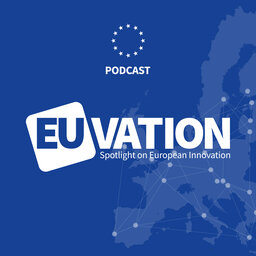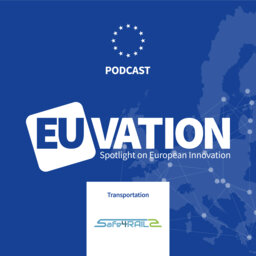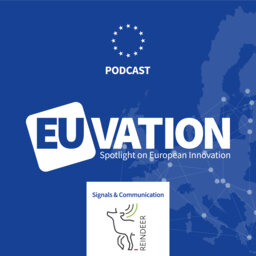Safe4RAIL-2 (2) H2020 Project: Focus on Work Package 1
In this episode, we discus work package 1 (TSN-based Drive-by-Data) in the Safe4RAIL-2 project. The goal of the Drive-by-Data network is to provide a robust, safe and secure communication system for the next generation Train Control and Monitoring System. Mohammed Abuteir heads up these efforts and shares some of the achievements and challenges he and his team have encountered.
This project has received funding from the European Union’s Horizon 2020 research and innovation programme under grant agreement No. 826073. The information and views set out in this document are those of the author(s) and do not necessarily reflect the official opinion of Shift2Rail Joint Undertaking. The JU does not guarantee the accuracy of the data included in this article. Neither the JU nor any person acting on the JU’s behalf may be held responsible for the use which may be made of the information contained therein.
iiISJoQCCRx6NkgUQlk1
Powerful collaborations, cutting edge science and curious minds coming together for a glimpse of the future. Stay tuned as we look at the latest updates on some of the most promising technology projects.
Hello and welcome. I'm your host, Peter Balint from Technikon. Safe4RAIL-2 is a European project aimed at improving the safety and efficiency of the European railway system. The consortium is composed of eight industrial partners, including SMEs, large companies, one research institution and one academic partner. Together, they provide expertise from the automotive, aerospace and railway sector in order to create synergies with existing and emerging concepts and technologies. Today, we focus on work package one in Safe4RAIL-2 , which addresses time sensitive networks and drive by data. Here to explain it all is Mohammed Abuteir from project partner TTTech in Vienna. Welcome, Mohammed, and thanks for joining us today.
Thanks.
So in Safe4RAIL-2, you are leading work package one, and work package one focuses on TSN based drive by data and we will discuss that in a minute. But first, tell us about your line of work, or in other words, what you do day to day.
Yes, I am. I am an innovation project manager at TTTech, focusing in the automotive and rail sectors. I am currently doing several projects and responsible to manage them internally and also with respect to partners. Most of this project this research project is innovation idea that we are focusing; one of them is the Safe4RAIL-2 . We are focusing there to collaborate with mainly with the <INAUDIBLE> Millichap, Siemens and Bombardier to provide them ther hardware.
And then if we sort of zoom in a little bit back to Safe4RAIL-2 , especially regarding TSN based drive by data. This is the focus of work package one in Safe4RAIL-2. But what is drive by data and what does this mean in the domain of railway communications? And when we say TSN, we talk about time sensitive networks. Maybe you could tell us just a bit about how that works as well.
In the drive by data concept is invested in the Safe4RAIL projects is focusing for is presented of train on board data communication system. In other words, this is like the ethernet train backbone as well as the ethernet consist networks; both networks is already recorded now by the drive by data. And we're using the time synchronization of course, because it's a standard <INAUDIBLE> ethernet protocols. Why? Because it's reliable and deterministic communication, that means they support several domain and actually it's stable as well in different domain, for example, like industrial, automotive, aerospace, and now we are trying to to invest more in the direction railway sectors and hopefully that that will be <INAUDIBLE>. The time sensitive network is forwarding the message actually in a predictable way with a guarantee low latency and very low jitters during the data transfers; the transmission. Also in... also the Time-Sensitive network also, we have the ability to have a mixed criticality systems where we have like a safety... safety data and non safety critical data is one network, both of them integrated in one network.
So there's this concept of critical systems versus non critical systems, and you're saying these are working together in the ideal wireless train situation. What are examples of each one of these systems critical and non-critical?
Yes, I forgot to mention the drive by data is the wired communication- we are... for example about the ethernet communications as example of the mixed criticality... mixed criticality communication like a safety critical function in the car, like a control unit signal, as well the doors, brake systems and so on. This is all the that the critical application or the critical communication signal is called safety; non safety, for example, like a infotainment data, video data, passenger data something like that, the exchange with the passenger, they will be considered non -critical data that we have an delay for, this data will be no issue for that. But for example, if we have an braking signal is delayed, that means this is danger and it could be and we lost some people or make like a unsuitable situation there.
OK, and if someone was to look at the website for Safe4RAIL-2 , they would see that the project has three main objectives. One is to increase the accuracy of data management in the communication bus of the train. The second is to develop wireless solutions in order to remove the wiring of the internal communications of the train. And thirdly, to cut the development time of new applications for trains. Does work package one contribute to all of these goals, or is it more applicable to one of them?
Actually, we are contributing in two of them focusing first of the increasing the accuracy of the data management in the communication bus of train. This is our focus. How we contribute since we are developing the driver data concept, where is reliable and safe communication system is implemented, then we are guaranteed here to to have an accurate data management in the communication. So this is like how we can see it, as will we contribute to the third one about the deployment time for the new application for the train, because we enable for them because the applications now we can move from the end device for one single application to end device with multiple applications, that means integrated application with multiple ones. This communication system enabled this change, of course, as work package one, we are not contributing to the <INAUDIBLE> device, but we give the the ability for the for the designer of... the design implementation to implement these things or make the changes by using the our communication systems.
OK, so it's sort of... your work is sort of spread out a little bit over the project. It's not necessarily so laser focused on one particular point. In Safe4RAIL-2 , are you developing any kind of demonstrator or some type of hardware or software?
Yes, we are in the work package one we are developing the prototype hardware, the prototype for the communication network, for the ETBN and also for the ethernet consist network. We developed two switches, one for the ETBN and for the ethernet backbone and one for the for the consist network OK; and this we will provide it to the complementary project was <INAUDIBLE> they're already invited there and they will implement the demonstrator by using our hardware and the complementary project is called CONNECTA, CONNECTA-2. This is like the complementary project that we are... provide for them the hardware and we have the use case completely the demonstrator later on, hopefully by then in June.
OK, so some of what you're doing spills over into CONNECTA-2 to it sounds like.
Yes, we... the target for for this, the whole story for the Shift2RAIL to have like an open call with where we are fit for the Safe4RAIL2 and other complementary project with the <INAUIBLE> that mean we received the requirements, everything from them, and we do... develop the concept together and implemented the hardware for them. And they they need to validate and verify the concept by the demonstrator.
OK, and so Safe4RAIL-2 is actually going to be wrapping up pretty soon, if you look back, can you identify any kind of challenges that you've encountered through the project? I mean, there's always seems to be something. Can you look at the project and say, this is where we had a snag and this is how we overcame it?
Yes. Regarding to the issue with the as our situation now with the covid-19, we don't have like a physical connection. Unfortunately, the covid-19 started with the last... in the last phase of the implementation and starting the phase of the testing where we couldn't have like real a real meeting or workshop together with the with the partner to make a testing for the for the hardware, for our prototype and so on in in real in the physical workshop. This is, of course, delayed little bit in the the the testing phase, but of course we overcome through this one with some virtual situation also in our current situation it's still the same. We decide to ship the hardware to one place and the one partner, they did the the testing by supporting online the other's partners. And in this situation, we were the, like, overcome this this this situation for this capability. But this has come to our mind later on because first of all, we thought maybe we will overcome this issue very soon for covid-19. But unfortunately, it takes a long time. Hopefully in the future we will cover... We will. We will be able to have like a physical workshop.
OK, and that's important because these physical workshops working hands on face to face, this is a really important part of the project. So,
Yes, especially in the testing, especially in the testing when we have the test and we need to integrate all the components together and test it, this is like... yeah, it's very important here .
What thanks for sharing a little bit about Safe4RAIL-2 . It's an interesting project with a lot of promise and you're doing work that is going to affect the railway sector for a long, long way down the road. So thanks for all your efforts with that and for giving us some information about how this project works.
Thanks a lot.
This podcast has been brought to you by Technikon. This project has received funding from the European Union's Horizon 2020 Research and Innovation Program under grant agreement number 826073.
The information and views set out in this program are those of the authors and do not necessarily reflect the official opinion of the Shift2RAIL joint undertaking. The joint undertaking does not guarantee the accuracy of the data included in this episode. Neither the joint undertaking, nor any person acting on the joint undertakings behalf may be held responsible for the use which may be made of the information contained here in.
 EUVATION: Spotlight on European Innovation
EUVATION: Spotlight on European Innovation



